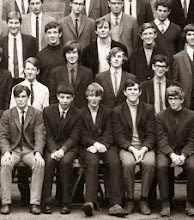
A writer who recognised this, and therefore deserves honour for being different from those talented but tramlined Northerners who dwell in the past and damagingly maintain that it is still exists, is Keith Waterhouse. His City Lights (sceptre 1994) is an outstanding evocation of boyhood in Leeds in the 1930s and early '40s, all the more appealing for the fun and pleasure which he took from the city, fired by his vivid young imagination. Anyone who sets out to trace the course of the Wyke beck on a raft called Spirit of Leodis (the supposed Roman name for Leeds) has something vital of the Huck Finn an Tom Sawyer in them.
Just as good, the sequel Streets Ahead (Hodder & Stoughton 1995) rushes past Waterhouse's time on the Yorkshire Evening Post to the triumph of Billy Liar (also terrific reading) and moving to London.
 Here, the honour already accorded him needs to be redoubled. Unlike so many Northerners who have succumbed to cliche-mongering because that was what their metropolitan commissioners wanted, he said, in so many words: 'I'm not in the North now. There are writers there who know better than I how things are, and how they are changing. I want to write about other things.' Of course, he did write about his Northern past, both in these autobiographies and in his Mirror and Mail columns, but crucially he made it clear that That was Then. He never pretended that trams still clanked over cobbles in the smog. Indeed he satirically lambasted Leeds for going all modern and abandoning such icons of his youth.
Here, the honour already accorded him needs to be redoubled. Unlike so many Northerners who have succumbed to cliche-mongering because that was what their metropolitan commissioners wanted, he said, in so many words: 'I'm not in the North now. There are writers there who know better than I how things are, and how they are changing. I want to write about other things.' Of course, he did write about his Northern past, both in these autobiographies and in his Mirror and Mail columns, but crucially he made it clear that That was Then. He never pretended that trams still clanked over cobbles in the smog. Indeed he satirically lambasted Leeds for going all modern and abandoning such icons of his youth.I'll include with his books this much more modest, but excellent, account of the Gipton estate in Leeds, The Gipton Story (Gipton History Group 1991) because the place has suffered from an 'adhesive' image based on highly partial and selective reporting.
 Charles and Dulcie Yelland, who were tremendous Labour activists on the estate, knew it backwards and bring out its virtues and the idealism of Rev Charles Jenkinson, the Socialist councillor whose vision created Gipton, and other peripheral estates in Leeds such as Belle Isle and Middleton, as model communities to replace the central slums. I also know Gipton well, because my family attended Lady Lane Methodist chapel which served the slums' residents and moved with them to Gipton when they were rehoused. So, like the Yellands, I have always known of the ample good which goes with the problems which inevitably, and seldom with any contextual material, make the media's headlines about the place, and many like it across the North.
Charles and Dulcie Yelland, who were tremendous Labour activists on the estate, knew it backwards and bring out its virtues and the idealism of Rev Charles Jenkinson, the Socialist councillor whose vision created Gipton, and other peripheral estates in Leeds such as Belle Isle and Middleton, as model communities to replace the central slums. I also know Gipton well, because my family attended Lady Lane Methodist chapel which served the slums' residents and moved with them to Gipton when they were rehoused. So, like the Yellands, I have always known of the ample good which goes with the problems which inevitably, and seldom with any contextual material, make the media's headlines about the place, and many like it across the North.

No comments:
Post a Comment